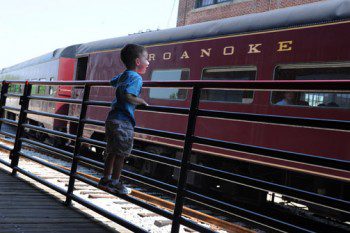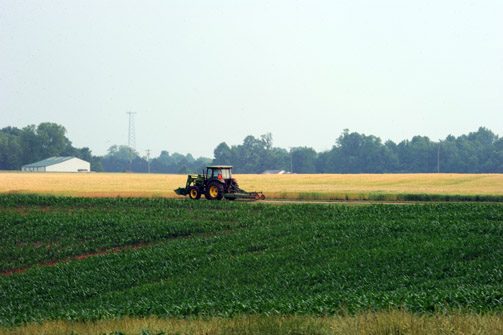Rowan County: An Introduction

Introduction: In Rowan County, history infuses nearly everything, from the beautiful tree-lined streets of Salisbury’s historic districts and the majestic 18th century stone churches of eastern Rowan, to the ongoing policy debates about the county’s future that tend to divide the county not only along political lines, but also geographic ones with historic antecedents. Rowan has a proud history that it continues to preserve, honor and celebrate in ways unmatched by other counties in the region. Yet, Rowan also has all the ingredients to move beyond its reputation as a quaint historic county to become a significant and relevant player in the Charlotte region’s emerging 21st century economy. How well the county balances growth and progress with the forces of preservation and tradition will go far in determining whether or not Rowan County can realize its potential as one of the region’s most enviable places to live and work.
Historical overview: An excerpt from A Guide to the Historic Architecture of Piedmont North Carolina (UNC Press), Catherine Bishir and Michael T. Southern. (p. 423).
“The county between the Yadkin and Catawba rivers has a rich and diverse heritage noted for its 18th and 19th c. Scotch-Irish and German churches and houses. When formed in 1753 from Anson Co. and named for political figure Matthew Rowan, the county encompassed the whole northwest sector of the colony and extended west indefinitely. Within Rowan’s present borders, Scotch-Irish immigrants arrived from the 1740s onward and established “the Irish Settlement” in fertile western Rowan. Germans soon followed in the east, constituting as much as 40 percent of the population. Both founded congregations that became mother churches in the region. On moderate-sized farms, citizens produced abundant grains and livestock and built 1 and 2-story farmhouses of log, frame, or occasionally brick; log outbuildings; and by the 19th c., double-crib log barns. Substantial late 18th and early 19th c. houses showed notably varied adaptations of traditional 3 and 4 room plans. In the early 19th c., soil depletion and other problems led many families to leave for “the west,” while a few consolidated land and slaves into a more hierarchical plantation economy. In the 1840s, gold mining bolstered the economy, followed by the 1855 arrival of the North Carolina Railroad (NCRR) and, in the later 19th c., cotton mills and roller mills, stone quarrying, and the immense railroad repair shops at Spencer.”
Rowan today: Talk with most planners about factors that are likely to shape the successful communities of the 21st century, and they’ll refer to amenities and advantages of which Rowan County has an abundance. Historic communities with a real sense of place, a rich cultural scene supported by strong local institutions, and easy access to quality open space – all of these are the kinds of community attributes that the knowledge-based companies and foot-loose entrepreneurs of the future are, we are told, likely to be looking for in order to compete for talent. Add in proximity to a major urban area and its international airport, as well as links to excellent transportation networks, including access to what many believe will be an enhanced passenger rail system in America, and most economic development experts would agree that any such community possessing all of those attributes would be well-positioned for success in the century ahead.

Rowan County has always been blessed with excellent transportation links, from its earliest days as an important commercial center along several major trading routes, to the coming of the NC Railroad during the 19th century, and eventually to the county’s location along Interstate 85, one of the most important transportation corridors in the southeastern United States. In fact, it seems fitting that the NC Transportation Museum is located in the Town of Spencer, given the important role that transportation and Rowan County together have played in the development of the Carolina Piedmont. On the eve of the Civil War, Salisbury had taken advantage of its prominent location to become North Carolina’s fifth largest town, the largest west of Raleigh.
As with many older and more established communities, Rowan County used its wealth to develop a number of civic and cultural institutions that have further enriched its quality of life over the years. Salisbury, for example, is unusual for a city its size in its support of a local symphony, community theater and visual arts center. Private colleges with rich histories of their own, including Catawba and Livingstone, have added to the intellectual climate, while the county has long supported and nurtured non-profit organizations such as the Historic Salisbury Foundation and The LandTrust for Central NC that have set regional standards in the protection of cultural and natural resources.

In addition to its built environment, Rowan County is also known for some of the Charlotte region’s most productive farmland. The rolling hills of western Rowan are dotted with substantial farmhouses and barns that testify to the sustained productivity of the area’s agricultural lands; it should not be surprising that one of the region’s most visible and promising efforts at farmland preservation is taking place in western Rowan. And draining these lands are numerous creeks and streams that feed two of the county’s most important natural and recreational resources, the Yadkin and South Yadkin Rivers.
Economically, Rowan benefits from its proximity not only to Charlotte, but also the Piedmont Triad metropolitan area, as Salisbury is almost equidistance along Interstate 85 between Charlotte and Greensboro. On the county’s southwestern border with Cabarrus, the NC Research Campus is emerging from the ruins of the old Cannon/Pillowtex site in Kannapolis, promising to create an economic boost fueled by bio-technology. The recent designation of the passenger rail line between Raleigh and Charlotte as a “high speed rail corridor”, along with the anticipated improvements in service such a designation is likely to bring, places Rowan among a fortunate few counties in the state that stand to benefit from what many experts believe will be the “place-making” infrastructure of the 21st century.
With such an abundance of economic, cultural and environmental advantages, it seems odd that Rowan’s future could even be in question. And yet, recent public policy debates there about economic development and growth management have revealed a county struggling with how to embrace change without abandoning its past. Disagreements about land use planning, economic incentives, and historic preservation often play themselves out in very public ways in community forums and on the pages of the local newspaper. The county’s ability to forge a consensus about its future from these competing voices will be critical to whether or not it can truly take advantage of the enviable wealth of assets available to Rowan as compared to other communities.
Regardless of the outcome, one has to admire the citizens of Rowan County, who have always cared enough about their community to argue about these issues. While some of her neighbors have seemed too eager to abandon their cultural and natural heritage for whatever was perceived as “progress” at the time, Rowan has steadfastly and confidently held on to what it deems important from its past. As the 21st century unfolds, and provided that Rowan’s citizens can indeed develop a shared vision of their future, that attitude may be rewarded by a new era that values many of the very things that Rowan has fought so hard to preserve. — Jeff Michael
Photos by Nancy Pierce
Rowan County links
Rowan county Articles & Publications







